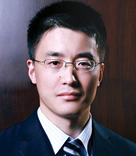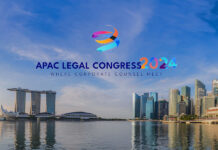Inventions, utility models and designs are the three major constituent parts of China’s patent regime. Among these, the number of filings for utility model patents has been increasing year on year, reaching 740,291 in 2012 and accounting for about 90% of the total filings for the same type of patent around the world, occupying an absolute dominant position.
With the large increase in filings for utility models and their increasing role in market economic activities, China’s utility model patent regime has drawn greater attention within China, as well as internationally. The author therefore wishes to give a brief introduction to these distinguishing features.

Gao Peipei
中原信达
合伙人、专利代理人
Partner, Patent Attorney
China Sinda
Term of protection
The Patent Law specifies that “the term ‘utility model’ means a new technical solution that is suitable for utilisation and that is put forward in respect of the form or structure of a product or a combination thereof”. That is to say that a utility model patent only protects a physical product with a specific form and/or structure that was manufactured by an industrial method, and does not accord protection to improvements in the method or the materials themselves. Furthermore, improvements in computer software embedded in hardware are, in examination practice, usually treated as an improvement in method.
In practice, an applicant should pay strict attention to whether the invention or creation satisfies the requirements in respect of the protected subject matter of a utility model, and in respect of an application that may not qualify, should take an attitude of caution. That is because once such an issue has been pointed out by the examiner, the room for revision and argument is in general quite small.
The term of protection for a utility model patent is 10 years, shorter than the 20 years for an invention patent.
Preliminary examination
Not having to undergo a substantive examination, a patent is granted for a utility model once it passes the preliminary examination. Accordingly, a patent for a utility model can be secured much more quickly than one for an invention. The average time for approval of an application for a utility model in China in 2012 was only five months. Additionally, the absence of a substantive examination can also save the applicant the examination fee and the agency fees required during the examination.
On the other hand, as a utility model is not subject to a substantive review, if the applicant did not have a good understanding of the prior art before the filing, the soundness of the utility model patent may be somewhat shakier than that of an invention. Furthermore, with the continuing increase in the number of filings for utility models, the absence of a substantive examination may result in a significant number of filings that do not in fact satisfy the conditions for the granting of rights being granted utility model patents, and of these many clearly are not novel. In order to head off this situation, China’s Patent Bureau recently issued revisions to the part of the examination guidelines on the examination of the clear novelty of utility models (order No. 67), providing a solid basis for examiners to actively search and examine whether utility models clearly lack novelty.
Although the revisions began to be implemented from 15 October 2013, the Patent Bureau in fact strengthened the examination of the clear novelty of utility models from the end of 2012. Among the utility model filings dealt with by the Patent Bureau in the first half of 2013, clear novelty notices were issued in respect of 5% of them. It can be anticipated that with the issuance of the above-mentioned revisions to the guidelines, that percentage will increase further.
Evaluation report system
The utility model patent evaluation report system is a supplement and improvement to the preliminary examination system in the post-grant procedures. More specifically, once the decision to grant a utility model patent has been gazetted, the patent holder or a materially interested party may request that the Patent Bureau issue a patent evaluation report. A patent evaluation report is not an administrative decision and does not have an effect on the patent itself, but can provide a point of reference for the patent holder to understand the soundness of the patent.
Pursuant to the Patent Law, when a patent infringement dispute involves a utility model patent, the court may request that the patent holder or the materially interested party present a patent evaluation report to serve as evidence in trying the patent infringement dispute. The main purpose for the court to request the presentation of a patent evaluation report is to provide reference when the court is considering whether to suspend the legal action when the alleged infringer petitions to have the patent declared invalid.
It should be noted that a materially interested party as mentioned above principally means a patent licensee that has standing as a plaintiff in a legal action, and does not include the alleged infringer in the legal action. A request for the issuance of a patent evaluation report may be made only once.
Same day filings
The Patent Law specifies that only one patent may be granted for identical inventions or creations. However, as a special case of the above-mentioned provision, if an applicant files for both a utility model patent and an invention patent for the same invention or creation on the same day and is first granted a utility model patent, if the applicant declares that he or she is relinquishing such utility model patent before its termination, the applicant may be granted an invention patent therefor (“same day filings”). That is to say, rights may be granted on two separate occasions for the same invention or creation.
If an applicant both wishes to secure an earlier grant of rights and secure a sounder right with a longer period of protection, he or she may make use of the exception that is same day filings. As the applicant only relinquishes the first secured utility model patent upon securing the invention patent, the utility model patent and the invention patent form a seamless continuation. Accordingly, exploitation of this exception can protect the applicant’s interests to the greatest extent possible.
Gao Peipei is a partner and patent attorney at China Sinda in Beijing
中国北京市西城区金融街19号
富凯大厦B座11层
邮编: 100033
11/F, Block B, Focus Place,19 Financial Street
Beijing 100033, China
电话 Tel: +86 10 6657 6688
传真 Fax: +86 10 6657 8088
电子信箱 E-mail:
sinda@chinasinda.com
www.chinasinda.com






















